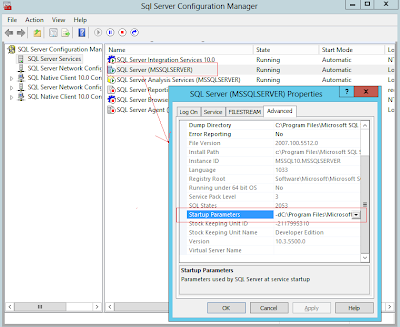When a stored procedure(SP) calls nested stored procedure, if both the outer SP and inner SP have begin tran - commit tran statement, how long are the (exclusive) locks for the inner DML statement going to be held? That is, if the inner SP commits transaction, will the locks that acquired in the inner SP transaction be released? Or are their locks going to last all the way up to commit statement of outmost SP?
The short answer is it will last until the commit of the outmost SP.
Here is an simple experiment that can provide some proof.
CREATE PROC InnerSP
AS
BEGIN
BEGIN TRAN
UPDATE dbo.Tab1
SET Name='Name1'
WHERE Id=1
SELECT 'After Update Tab1'
SELECT * FROM sys.dm_tran_locks
WHERE resource_type != 'DATABASE'
UPDATE dbo.Tab2
SET City='Seattle'
WHERE Id=1
COMMIT TRAN
SELECT '(InnerSP) After Commit'
SELECT * FROM sys.dm_tran_locks
WHERE resource_type != 'DATABASE'
END
GO
CREATE PROC OuterSP
AS
BEGIN
BEGIN TRAN
EXEC InnerSP
-- cut --
COMMIT TRAN
SELECT '(OuterSP) After Commit'
SELECT * FROM sys.dm_tran_locks
WHERE resource_type != 'DATABASE'
END
GO
EXEC OuterSP
OuterSP calls InnerSP and InnerSP has BEGIN TRAN - COMMIT TRAN. If the exclusive locks are released after innerSP commit,
dm_tran_locks will show no locks are held against Tab1 and Tab2 tables. But as shown below, the result is that the X locks are still intact after inner SP commit. Their locks are only released when outer SP commit is called.

The example above has UPDATE statements whose lock type is X (exclusive) lock. For Insert, Update, Delete, it holds X lock within a transaction, but for SELECT - within a transaction - the Shared (S) lock will be released once the rows are read in the default READ COMMITTED isolation level.
If transaction isolation level is higher, S lock will last until it meets COMMIT.
On another note, if ROLLBACK is called in nested SP, the entire transaction is rolled back regardless of nested SP level. For example, when you have a SP that calls nestedSP1 that calls nestedSP2, if you call ROLLBACK in nestedSP2, the whole transaction from outmost SP will be rolled back. To avoid this, you can limit the transaction scope by using save transaction point. An example shown below rolls back nestedSP transaction only and UPDATE in outerSP is still valid.
CREATE PROC NestedSP
AS
BEGIN
BEGIN TRY
SAVE TRAN T2
UPDATE dbo.Tab SET City='Redmond' WHERE Id=1
RAISERROR ('Error', 16, 1 );
COMMIT TRAN T2
END TRY
BEGIN CATCH
ROLLBACK TRAN T2
END CATCH
END
GO
CREATE PROC OuterSP
AS
BEGIN
BEGIN TRAN T1
EXEC NestedSP
-- cut --
UPDATE dbo.Tab SET City='Seattle' WHERE Id=1
COMMIT TRAN T1
END
GO
EXEC OuterSP


